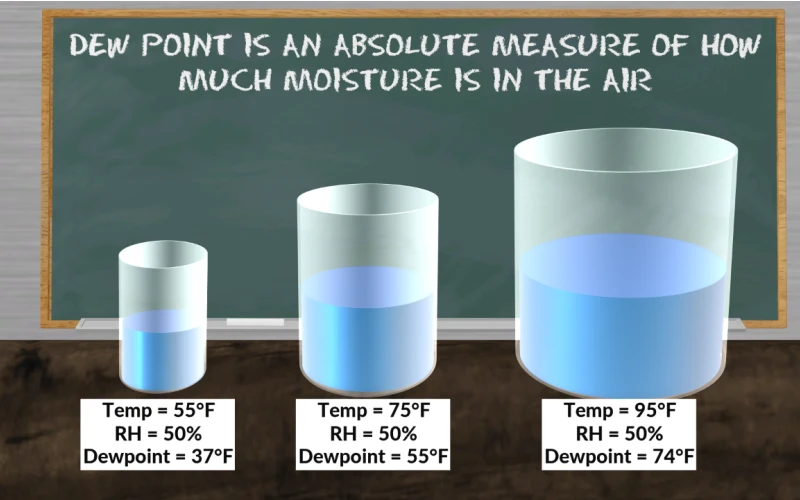
# High Dew Point and Its Impact on Weather Conditions
## Understanding Dew Point
The dew point is the temperature at which air becomes saturated with water vapor, leading to the formation of dew, fog, or clouds. When we talk about a high dew point, we’re referring to conditions where the air contains a significant amount of moisture, making the temperature at which condensation occurs relatively warm.
## What Does a High Dew Point Mean?
A high dew point indicates that the air is holding a large amount of moisture. This typically results in:
– Increased humidity levels
– A muggy or sticky feeling in the air
– Reduced evaporation of sweat from the skin
– Greater discomfort in warm temperatures
When the dew point rises above 65°F (18°C), most people begin to feel the humidity. Dew points above 70°F (21°C) are considered oppressive and can make even moderate temperatures feel extremely uncomfortable.
## Effects on Weather Patterns
High dew points significantly influence weather conditions in several ways:
### 1. Increased Likelihood of Precipitation
When dew points are high, the atmosphere contains abundant moisture, making precipitation more likely. This can lead to:
– More frequent and intense thunderstorms
– Heavy rainfall events
– Prolonged periods of wet weather
### 2. Reduced Visibility
High moisture content in the air often results in:
– Dense fog formation, especially in the early morning
– Hazy conditions during the day
– Reduced visibility for transportation
### 3. Impact on Temperature Perception
The combination of high dew points and warm temperatures creates what we commonly refer to as the “heat index” or “feels like” temperature. This makes the air feel much warmer than the actual thermometer reading because:
– The body’s natural cooling mechanism (sweat evaporation) becomes less effective
– Heat stress on the human body increases
– The risk of heat-related illnesses rises
## Seasonal Variations
The impact of high dew points varies by season:
### Summer
In summer months, high dew points combine with high temperatures to create:
– Oppressive heat waves
– Increased energy demand for cooling
– Higher risk for vulnerable populations
### Winter
While less common, high dew points in winter can lead to:
– Freezing rain events when temperatures are near freezing
– Heavy snowfall when temperatures are below freezing
– Icy conditions on roads and surfaces
## Measuring and Forecasting
Meteorologists use dew point measurements to:
– Predict fog formation
– Estimate overnight low temperatures
– Assess thunderstorm potential
– Calculate heat index values
Modern weather stations continuously monitor dew point along with other atmospheric parameters to provide accurate forecasts and warnings.
## Health and Safety Considerations
High dew point conditions require special precautions:
– Stay hydrated and limit outdoor activities during peak heat
– Be aware of signs of heat exhaustion and heat stroke
– Ensure proper ventilation in indoor spaces
– Monitor weather alerts for severe thunderstorm warnings
Understanding dew point and its relationship to weather conditions helps us better prepare for and adapt to various atmospheric situations throughout the year.
Keyword: high dew point